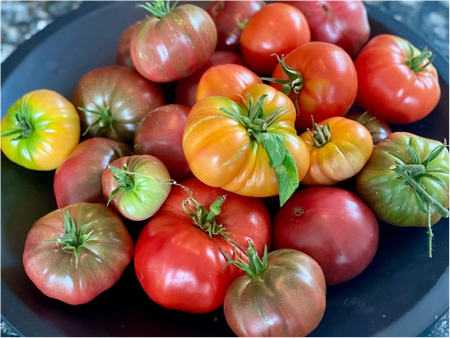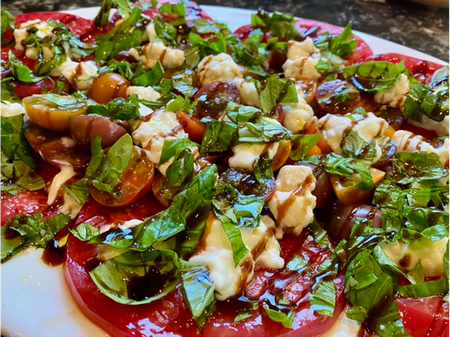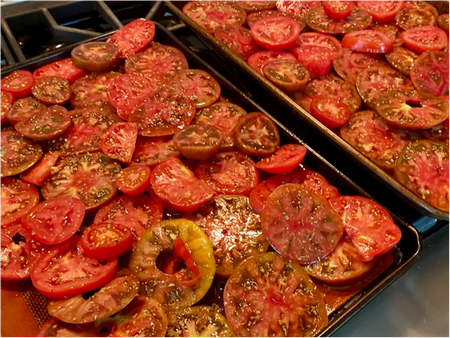From the UC Blogosphere...
'Dr. Zac' to Present UC Davis Seminar on Honey Bee Research, Life Experiences
"A lot of students take a gap year between their undergrad and grad program," says honey bee scientist Zac Lamas,...

Honey bee scientist Zac Lamas, a National Institute of Food and Agriculture (NIFA) postdoctoral fellow with the USDA's Agricultural Research Services.
Decisions, Decisions: Solar Eclipse or a Bumble Bee?
What insects did you see during the Solar Eclipse, dubbed "The Great North American Eclipse?" And what were they doing? In...
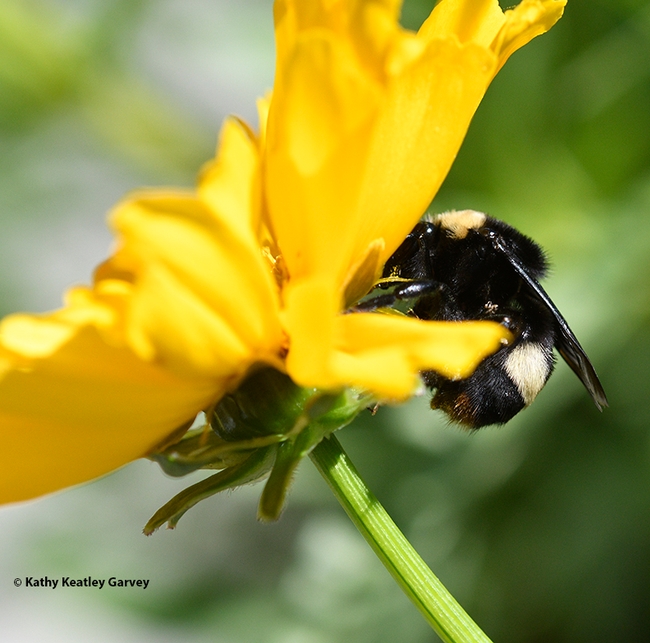
A queen bumble bee, probably a Bombus californicus, forages on a Coreopsis during the April 8th solar eclipse. (Photo by Kathy Keatley Garvey)
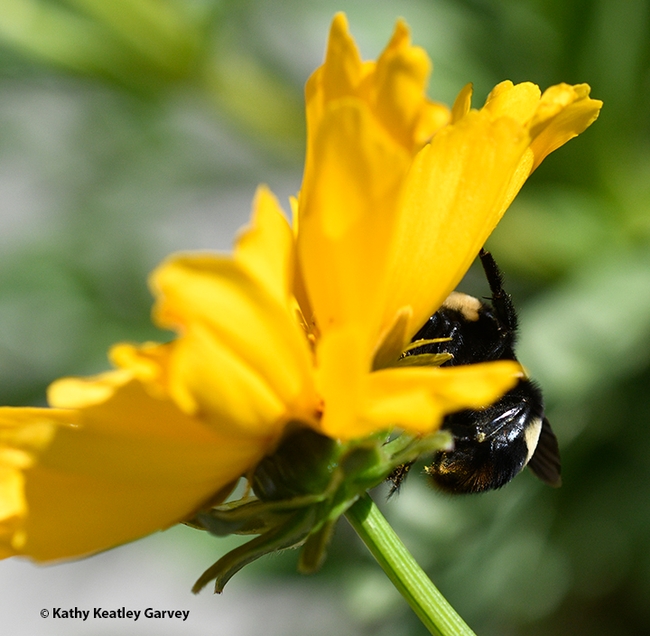
Brace yourself! A bumble bee appears to hold up a petal of the Coreopsis. (Photo by Kathy Keatley Garvey)
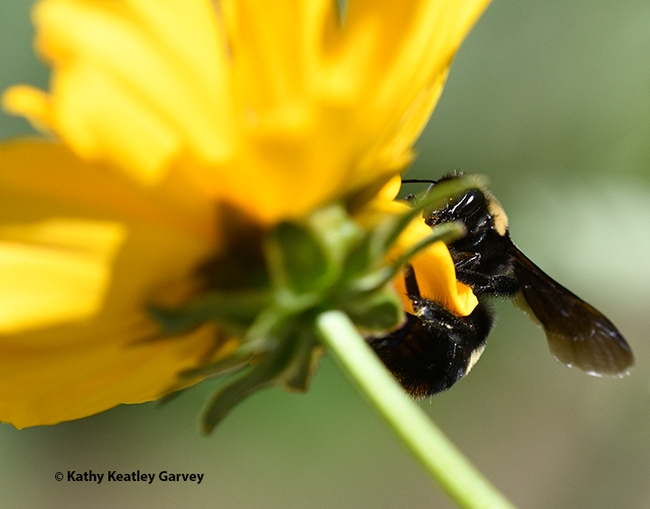
A little twist here, a little twist there. The bumble bee adjusts. (Photo by Kathy Keatley Garvey)
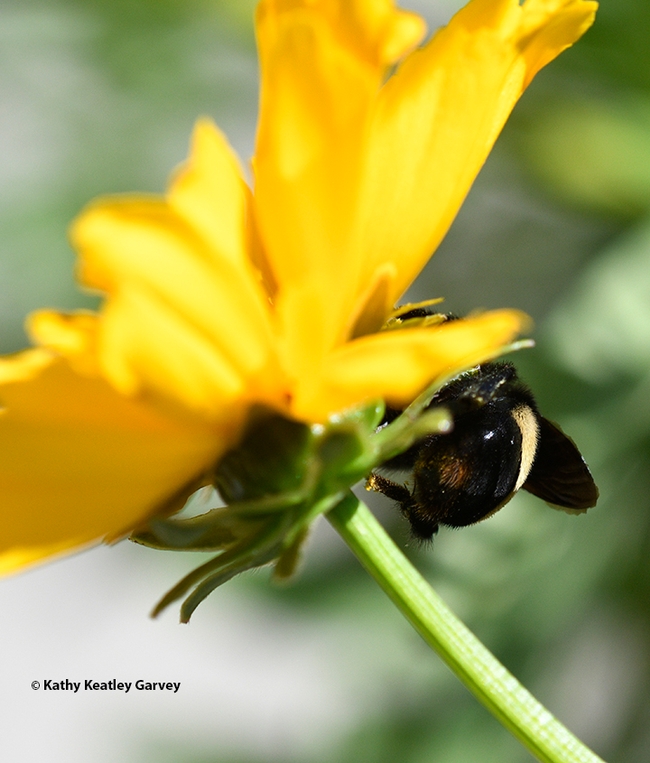
The end! The bumble bee is unaware of the photographer--or the solar eclipse. (Photo by Kathy Keatley Garvey)
You Can't Choose a Bad Tomato
The 2024 Great Tomato Plant Sale is just around the corner, from April 13 to April 27, in three locations this year: Walnut Creek, Antioch and Richmond. This year's sale will feature 67 varieties of tomatoes chosen not only for flavor, but also for their ability to thrive in our Contra Costa County climate. Whether you're growing in beds or containers, in the heat of East County, the cool fog of West County, or somewhere in between, the Great Tomato Plant Sale will have a variety that will work great for you!
With so many choices, how do you know where to start? One possibility is to think about how you plan to use your tomatoes. Do you want to eat them straight off the vine? Do you imagine using them in fresh salads or hearty sandwiches? Maybe you want to make sauce or tomato paste, or are thinking about roasting, canning, or frying them. For those of you with certain culinary goals in mind, remember that tomatoes can be specialists. Each has its own unique flavor ranging from sweet and fruity to acidic and tangy. Some are meaty, some juicy, some sturdy enough to slice for a sandwich. Here are some of our favorites.
Fresh Snacks
Pop them in your mouth as “garden candy” or add to a salad or skewer. Cherry and grape tomatoes or small fruited slicer tomatoes are perfect for bite-sized snacks, kebabs, or including on a vegetable tray.
• Orange Paruche—it glows a brilliant, neon orange. One inch round fruits are thin-skinned and crack-and-disease-resistant with a superb flavor.
• Black cherry—dusky purple-brown grape-like 1” tomatoes with a rich, complex flavor.
• Sun sugar—very sweet, fruity-tasting orange cherry tomatoes in long clusters on vigorous plants.
• Tommy Toe—bright red and prolific with excellent flavor and plenty of juice.
• Yellow pear—wonderful in salads or as garden candy with a delightfully sweet flavor.
Salads and Sandwiches
Slicers, some heirloom tomatoes, and beefsteak tomatoes all have varieties that are delicious when eaten fresh. Their high water content means they are not the best for cooking, but they hold together well, making them ideal for sandwiches. And they come in a variety of colors to add exuberance to a salad such as the Caprese. Your choices will depend primarily on your growing conditions and your personal flavor preferences.
• Early Girl—4- to 6-ounce, bright crimson fruits with a tangy flavor.
• Black Sea Man—produces early and does well in containers. With attractive marbled flesh and a rich flavor.
• Aunt Ruby's Green—1 pound lime to yellow-green fruit with a superb fruity, slightly tangy taste.
• Caspian Pink—an incredibly sweet and juicy fruit that can reach one pound or larger. Great either fresh or cooked.
• Chocolate Stripe—these large tomato plants yield a big crop of mahogany colored fruit with dark, olive green-striping.
• Paul Robeson—7- to 10-ounce, blackish brick-red fruits with a sweet and smoky flavor.
Sauce, Paste and Canning
Look for thick flesh, rich flavor, tender texture, mild acidity, and low water content. These tomatoes, often known as paste tomatoes, have been developed for sauces. They peel easily and cook well, making a thick and delicious sauce quickly. Varieties include Roma and the famous Italian cooking tomato, San Marzano.
• Granadero—attractive, bright red, 4- to 5-ounce tomatoes with very good flavor. These thick-walled fruits are ideal for fresh tomato sauces, salsas, and salads.
• La Roma III—high yields of 5- to 8-ounce plum tomatoes on healthy, disease resistant and vigorous vines.
• Big Mama—5-inch-long paste tomatoes that are meaty, easy to peel and have very few seeds.
• San Marzano—solid flesh is perfect for canning/freezing for rich pasta sauce all winter.
Roasting, Salsa
Have you ever wanted to make your own salsa? Perhaps roasting cherry tomatoes or topping tomato slices with parmesan cheese sounds like something you'd enjoy. Paste tomatoes make great salsa and all tomatoes can be roasted. Experiment, mix different types, roast and then puree them with the skins on. Toss them in with pasta, use them for sauce, or can them for next winter when you miss the flavors of summer.
You Can't Go Wrong
There's a lot more to learn about tomatoes. Some will fare better than others in the dry heat of East County; others will thrive in the cooler climate of West County. If you have limited space, try cherry tomatoes in containers or a compact determinate (bush) variety. If you want the harvest to spread out all summer, choose an array of varieties with different ripening dates, or grow indeterminate (vine) tomatoes which tend to produce all summer. Our website explains all the differences, and even provides a shopping list for planning. https://ccmg.ucanr.edu/EdibleGardening/GreatTomatoPlantSale/
Remember, you can't choose a bad tomato. Experiment and have fun!
All photos courtesy of Pamela Schroeder, Master Gardener and tomato lover.
Help Desk of the UC Master Gardeners of Contra Costa County (RDH)
Gardeners With Heart: Bridging Communities Through Connection
Watch the video on YouTube here.
As we enter the second week of National Volunteer Month, we are honored to recognize a remarkable group of UC Master Gardener volunteers nominated for their exceptional work as Community Connection Leaders. These UC Master Gardeners have demonstrated outstanding leadership and passion in fostering connections within their communities and helped strengthen relationships with audiences and community partners.
Join us as we celebrate these inspiring "Gardeners with Heart" for their contributions to building stronger, more connected communities. Leave a comment of gratitude below!
Kathy Sheesley, a UC Master Gardener from Sutter-Yuba Counties, developed and implemented an impactful partnership with Habitat for Humanity's Harmony Village helping bring gardening knowledge to a community of previously unhoused individuals. Kathy has developed and delivered 10 educational workshops on gardening basics and pest management. Through the assistance of grant funding, Kathy spearheaded the purchase and implementation of a community garden on the grounds complete with 15 raised garden beds and various tools needed to work in the gardens. The impact on the Harmony Village community has been immeasurable. Through thoughtful educational workshops and one-on-one mentoring, Kathy has brought hope and happiness to an otherwise forgotten population.
Kim Stempien, a dedicated UC Master Gardener of Shasta County, has been instrumental in mentoring the next generation of gardeners. Through her efforts in school gardens, she has empowered students to cultivate healthy, vibrant spaces for learning and exploration. Kim has taken the lead in organizing a group of UC Master Gardeners to be school garden champions. These volunteers adopt a school garden and mentor them. The program is currently active at 13 school sites thanks to Kim's vision and passion!
Edith Lin, a UC Master Gardener from Santa Clara County, has demonstrated the transformative power of gardening in unexpected places. Through her work with incarcerated women, she has provided healing and purpose. Edith is in her third year leading the Gardens Inside - at Elmwood Correctional in Milpitas, Calif. The program, designed for minimum security, women inmates, is evolving and growing thanks to Edith's leadership. In two years, the Gardens Inside program has reached over 110 incarcerated women and produced approximately 250 pounds of fresh produce. Many of the women plan to start their own garden when released, all thanks to Edith's training and support.
Cynda Vyas, a UC Master Gardener from Marin County, exemplifies the spirit of community connection through her partnerships with local organizations and her commitment to sustainable gardening outreach. In her leadership role, Cynda has made a huge impact. More than 3,000 youth have benefited from projects like Farm Day, Exploring Habitats, and school gardens, and close to 10,000 adults have participated in events, classes, or hands-on workshops. Cynda helps support project leaders and frequently attends activities and events to lend a helping hand.
Jeanne Anne Pine, has shown exceptional leadership in her efforts to cultivate community gardens. Through her many projects, she has brought together diverse groups, fostering unity and resilience in Mariposa County. She advocates for the UC Master Gardener Program at Board of Supervisor meetings and on local radio stations. She connects us with local organizations, including the local history museum, the food insecurity network, and the Chamber of Commerce. Jeanne Anne reaches out and connects even the most unlikely of partners and then steps in to ensure the partnerships are successful.
Marilyn Carne-Smith, has been a powerhouse for the UC Master Gardeners of Orange County. Marilyn has helped create many connections throughout her community including reviving a relationship that lay dormant during Covid-19. Marilyn is the driving force behind the relationship between the Sherman Library and Gardens in Newport Beach. She started running an informational booth, providing gardening-related coloring books for children, and bringing in garden experts to speak on a monthly theme. Through this work, she is able to share gardening knowledge with community visitors and tourists, while also helping to educate other UC Master Gardeners. Orange County is fortunate to have someone working so hard to keep their community connected to gardening.
Martha Carpenter, a UC Master Gardener from Santa Clara County, helped rebuild the UC Master Gardener Library Talks program. Once the local libraries were ready to reopen and offer public events Martha rallied to bring a variety of UC Master Gardener volunteers in to speak and be Library Liaisons. She is an organized and strategic leader who used those skills to relaunch a dormant program at dozens of libraries throughout Santa Clara. The UC Master Gardener Program of Santa Clara County is lucky to have Martha!
Julian Hoyle, has been an instrumental UC Master Gardener on the education committee in Ventura County. Julian's commitment to excellence in training can been seen in his dedication to teaching several of the more challenging courses like Introduction to Science-Based Gardening, Basics of Botany, and the Use of Pesticides and Herbicides. He trains volunteers for the county's Help Desk, and is an active member of the Speakers Bureau. Over 700 UC Master Gardeners have been trained by Julian! Having someone like Julian who is so deeply respected in the community is inspiring.
Clio Tarazi, is a driving force in the UC Master Gardeners of Sonoma County. She has shown exceptional leadership in developing educational gardens. Her vision and dedication have created spaces for learning and growth, enriching the lives of community members for generations to come. As project leader of the Los Guilicos demonstration garden, Clio oversaw fellow UC Master Gardeners who rehabilitated a large and challenging site that had been impacted by wildfire. Clio was able to connect with local companies to acquire needed supplies such as irrigation materials and wood mulch. She also created a new relationship with the local Rotary International who provided more labor making this project a true community effort. Clio's skills and talents in making community connections and building partnerships have been key to Los Guilicos demonstration garden's success and strengthening the UC Master Gardener community in Sonoma County.
Susan Angell and Sheila Mutter, champions in Sonoma County, have created magical spaces for children to connect with nature. Their dedication to the Children's Garden has inspired countless young minds, fostering a deeper appreciation for the natural world. The UC Master Gardener Children's Garden is a 6 ½-acre farm on the east side of Sonoma managed by Sonoma Ecology Center (SEC). Hundreds of their young gardening visitors have benefited from this special place where families can come to play, taste, and learn about gardens.
We are incredibly grateful for the dedication, passion, and hard work of Cynda Vyas, Jeanne Anne Pine, Marilyn Carne-Smith, Martha Carpenter, Julian Hoyle, Kathy Sheesley, Clio Tarazi, Kim Stempien, Edit Lin, Susan Angell, Sheila Mutter, and their fellow UC Master Gardener volunteers, who have demonstrated in bridging communities and fostering connections through gardening and education. Their collective efforts have enriched the lives of individuals and families, creating stronger, more resilient communities for all. As we celebrate National Volunteer Month, let us express our heartfelt gratitude to these "Gardeners with Heart" for their invaluable service and commitment to building a brighter future for all.
About National Volunteer Month and Gardeners with Heart
During National Volunteer Month (April 1 - 30), the UC Master Gardener Program celebrates its incredible volunteers and their contributions to California communities. Gardeners with Heart volunteers were nominated for their outstanding work in fostering community connections and promoting gardening and education, highlighting their commitment to building stronger, more connected communities. Join us in honoring their dedication and passion for making a difference in the lives of others. If you would like to get involved and learn more about gardening in your community, you can find your local program here.

MG with heart color logo blue gloves gold trim
Breathtaking Bluebonnets and Butterflies
If you've never been to the 284-acre Lady Bird Johnson Wildflower Center at the University of Texas, Austin, in...
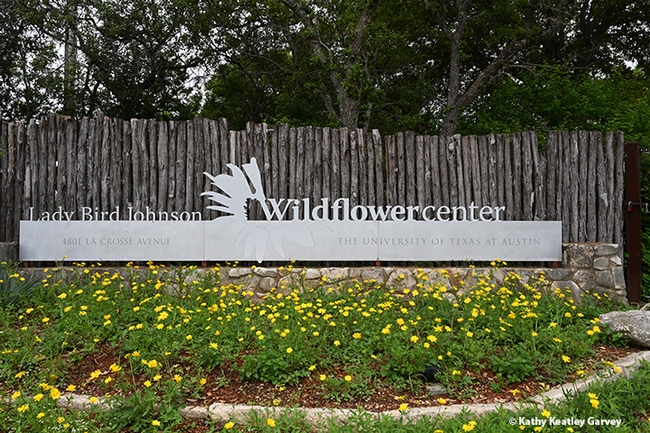
Signage at the 284-acre Lady Bird Johnson Wildflower Center at the University of Texas, Austin, welcomes visitors. (Photo by Kathy Keatley Garvey)
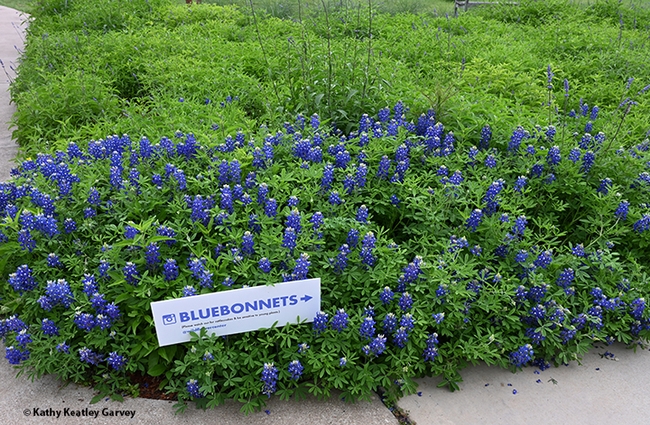
A bluebonnet sign warns visitors of rattlesnakes. (Photo by Kathy Keatley Garvey)
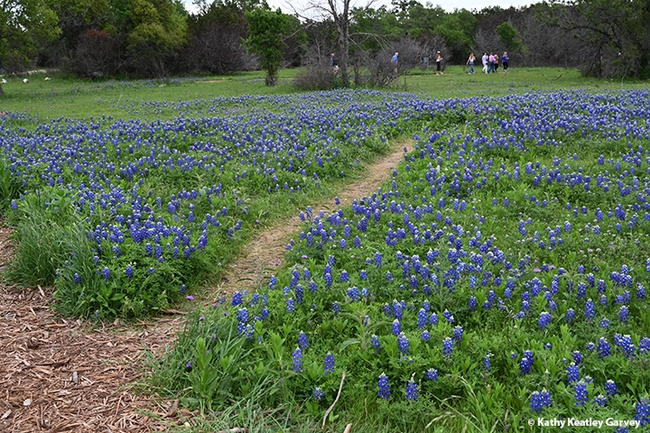
Visitors are to stay on the path at the Lady Bird Johnson Wildlower Center. This image was taken on Easter Sunday. (Photo by Kathy Keatley Garvey)
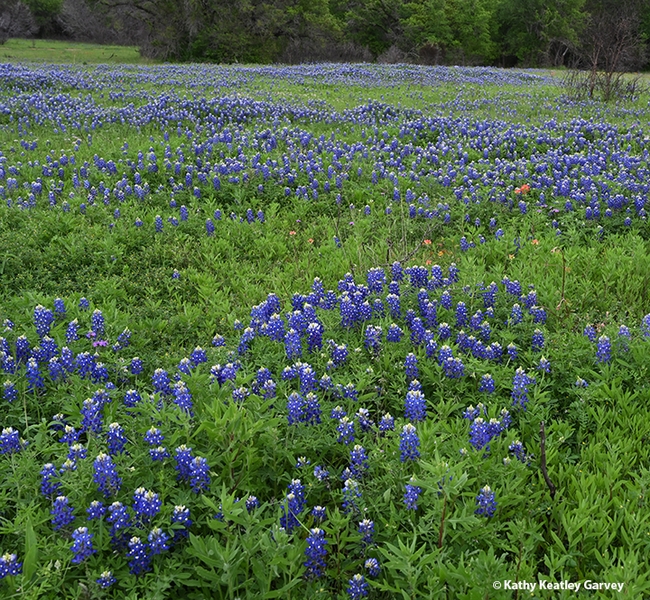
The bluebonnets were spectacular on Easter Sunday. (Photo by Kathy Keatley Garvey)



